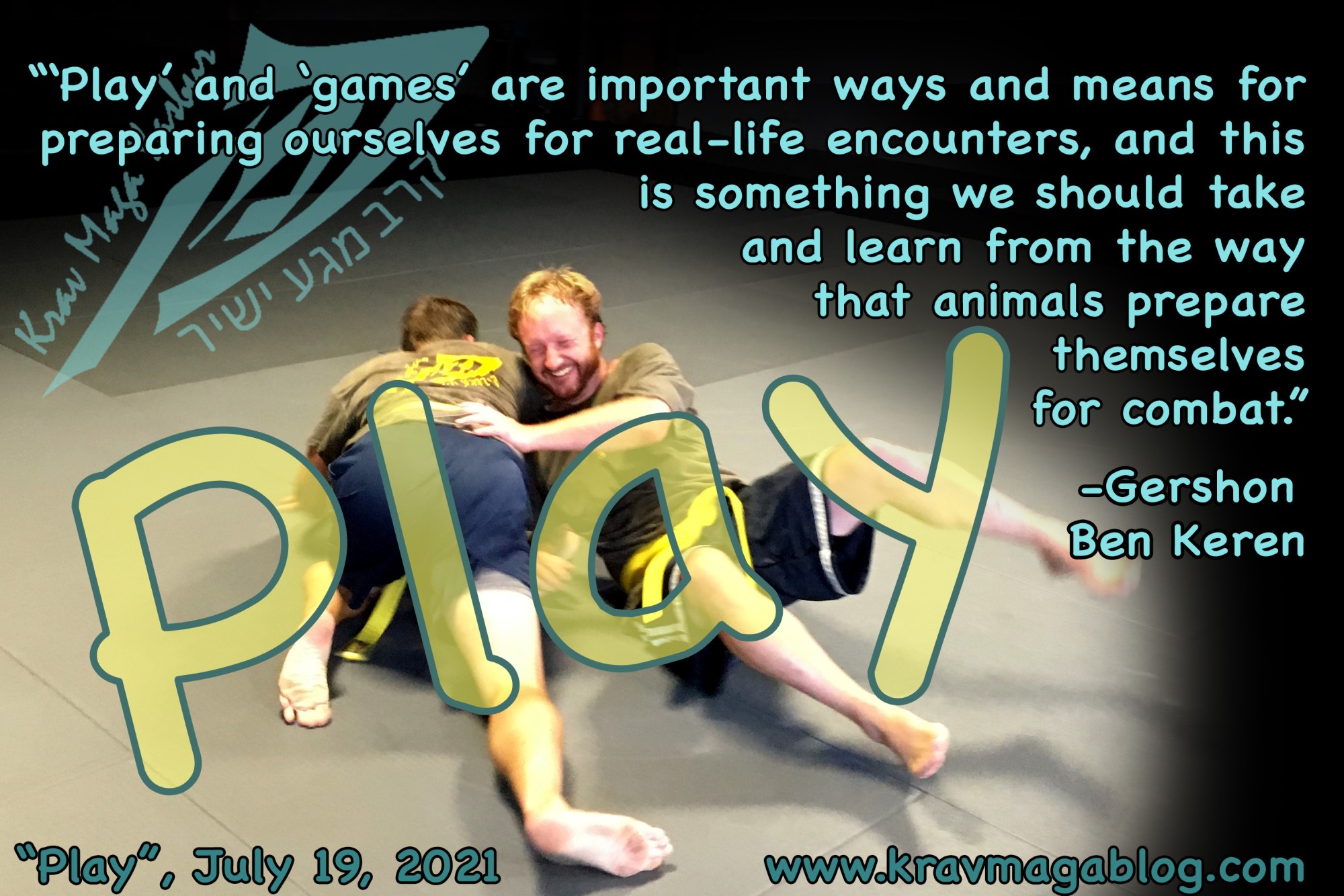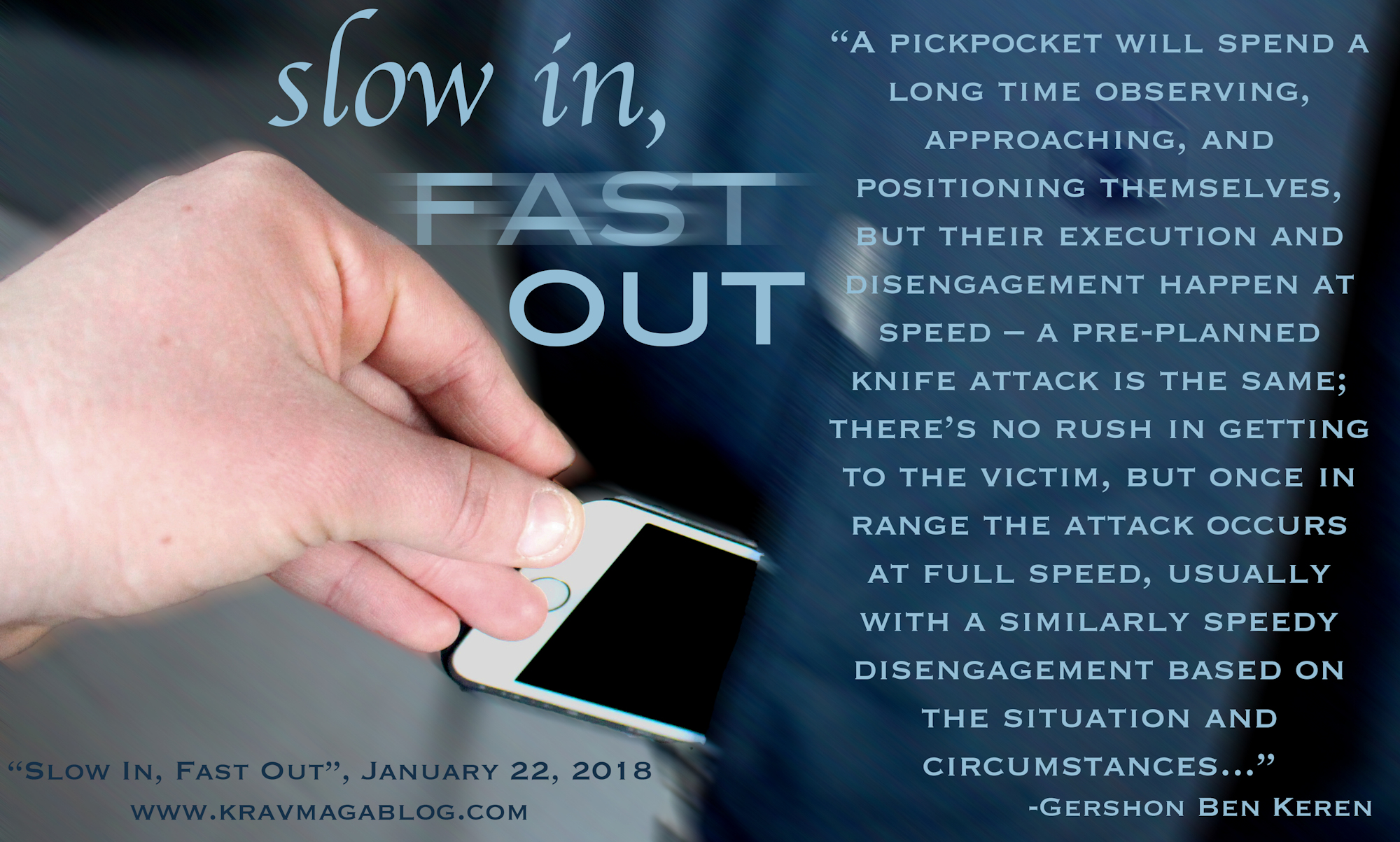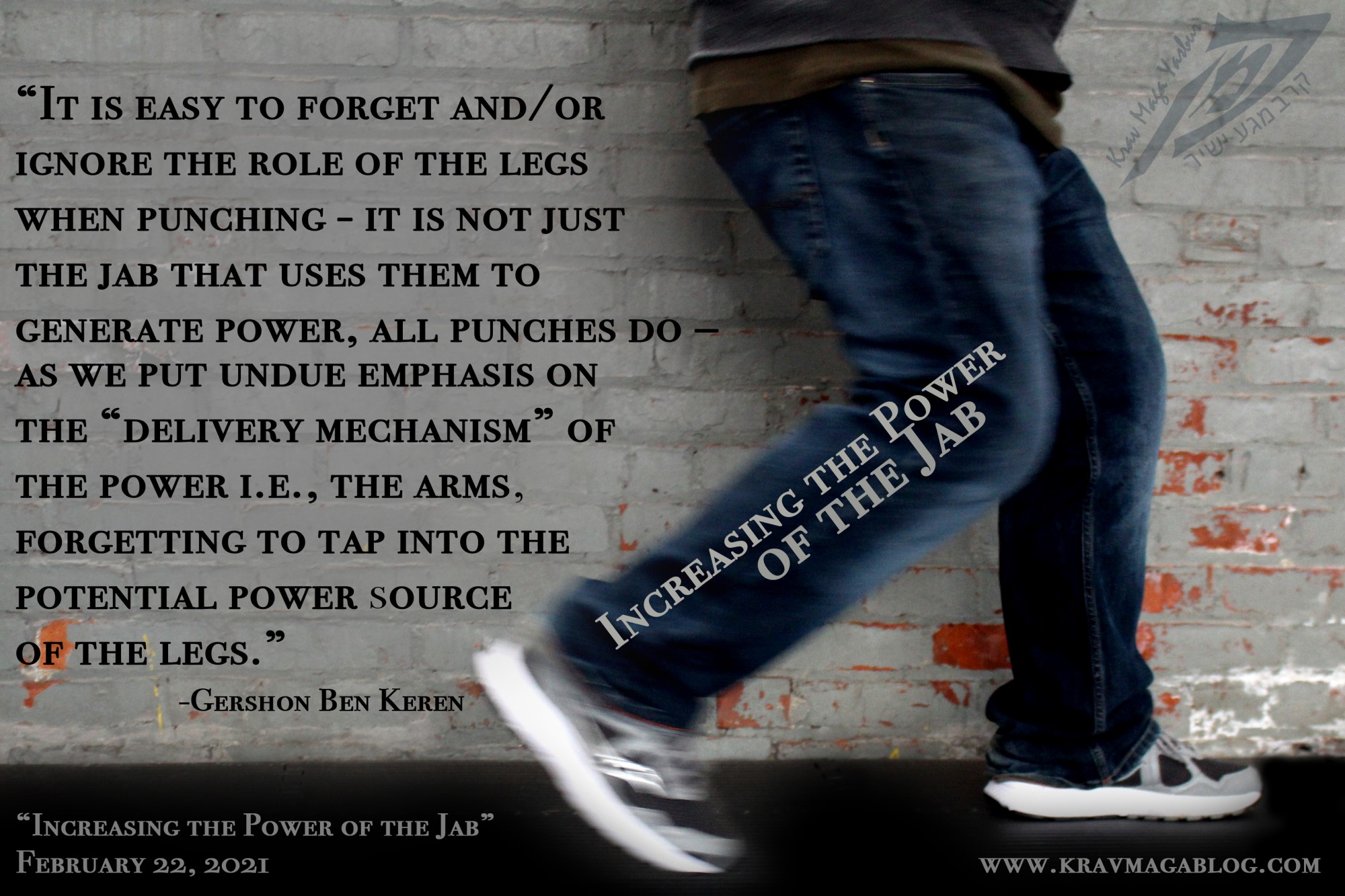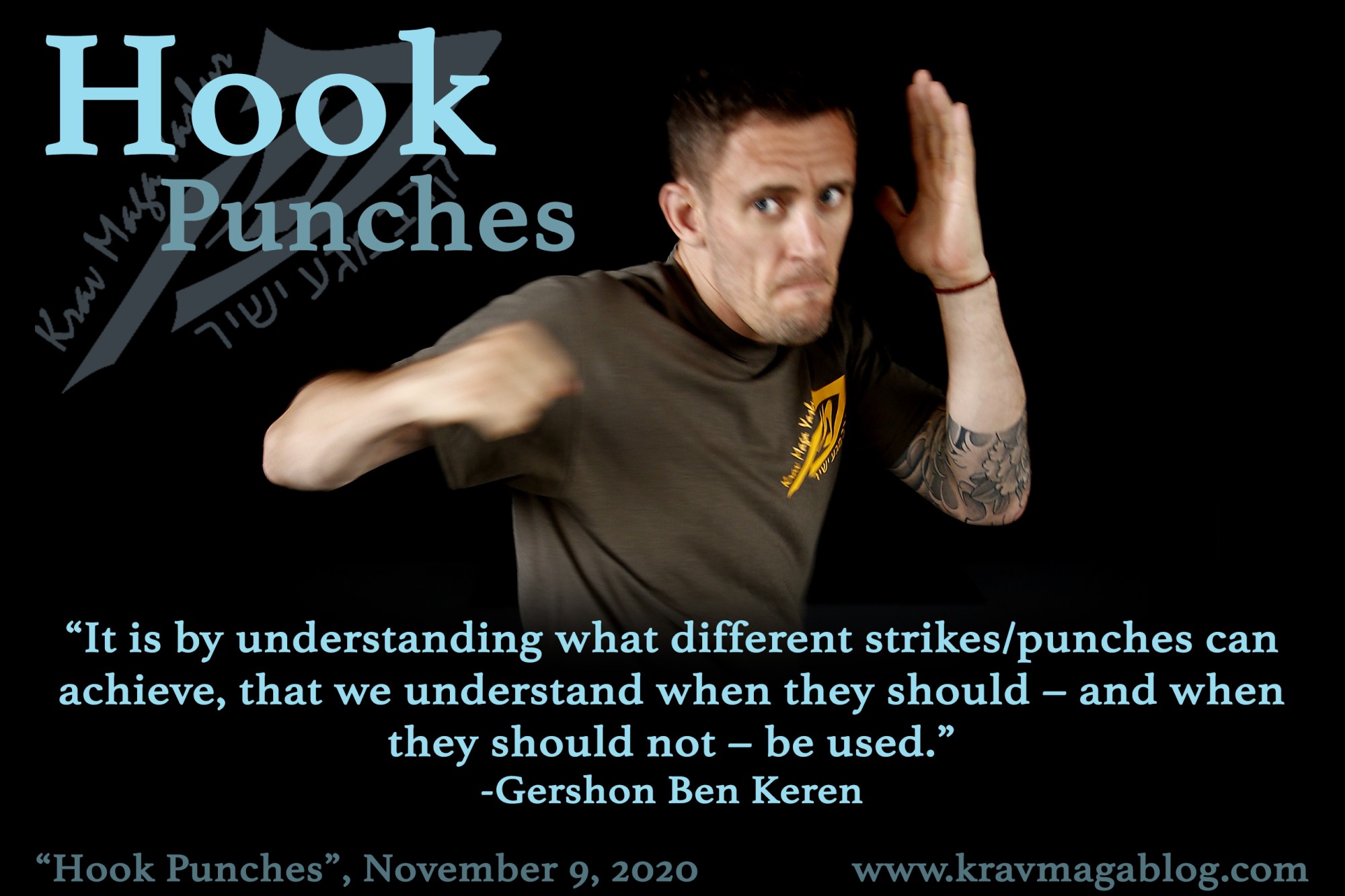Hook Punches, is an article written by Gershon Ben Keren, a 5th Degree Black Belt in Krav Maga, who teaches Krav Maga in Boston, MA. He has also authored three Amazon best-Selling Books on Krav Maga.
When I work the heavy bag, I like to go in with a plan; a combination of punches, strikes and kicks that I want to train – and this combination must be a realistic one e.g. something that I could use when sparring etc. I try to have my combination tell a “story”, such as: I throw a Jab, move out offline, at an angle (to avoid a counter jab), move back in with a jab/cross, which doesn’t get through my opponent’s guard, so I then follow up with a hook punch to get round the guard etc. This approach makes my bag work interactive, and functional, rather than simply an exercise in hitting the bag. This approach also means that I need to understand the purpose and role of my different punches and strikes, and how different punches relate to each other. There is sometimes a tendency to think that simply throwing as many strikes as you can in a period of time will overwhelm every aggressor, however this type of thinking doesn’t factor in the response(s) of an opponent, who may be able to cover, ride, slip and block the strikes making a “barrage” of punches relatively ineffective. Punches and strikes are tools which can be used for different purposes - and to overcome particular problems - and it is by understanding their usage that we increase our chances of surviving a violent encounter. In this article I want to take a brief look at some of the different ways, that hook punches can be used to solve different problems.
In a real-life violent encounter, I am generally looking to use my hardest/strongest body parts to deliver my power strikes. By and large that translates to my elbows, knees, and head. In close-range striking to the head, my elbows are in most cases my first-choice weapon, over my fists (obviously this is not going to be the case in every encounter, as each one is different/distinct and may follow a different path etc.). However, if a person has a tight guard, and is covering well, even landing vertical strikes, such as throwing elbows, up and down, vertically between my opponent’s arms can be difficult, and be found ineffective – only if the head is unprotected am I likely to throw my elbows in a horizontal plane, when directly facing an assailant. To solve the problem of a strong guard, that is in front of my assailant’s face and is protecting it well, I need to come around the guard, and this is where my hook punches have an important role to play – as these can be delivered from the side, rather than the front. One of the things that needs to be understood about the difference between real-life confrontations, and sparring matches (which are important and valuable training methods), is that punching bare-knuckle is somewhat different to punching with a glove; especially a 12 or 16 ounce boxing glove. When punching bare-knuckle you need to be somewhat more accurate, to ensure that you are connecting with the intended knuckles, and not simply any part of the hand or glove. Also, if somebody is covering well (and this is something to note for defense), the gaps or holes in the defense may be pretty small, requiring you to get the angle exactly right in order to place your punches – if people have only learnt to cover whilst wearing a relatively large boxing glove, they may find that unless they adapt and tighten it up, they will present large holes in their defense, which can be exploited. So, whilst hook punches are useful, against somebody who knows how to cover and has a good guard, they need to be accurate, in order to be effective; and this accuracy needs to be trained and practiced.
Hooks to the body can also be highly effective and can be used to accomplish several things. If you are able to throw powerful hooks into the body, even a conditioned fighter will eventually be forced to block/cover, which means dropping the hands from the head; repeated body shots are also extremely effective at tiring a person out – especially if they’ve consumed an adequate amount of beer. With the hands dropped to protect the body, the head/face becomes an accessible target. Another thing that hooks to the body can achieve is forcing a person to sink/root their weight. When people bring their guard down to protect the body, they tend to accompany the drop in their hands/arms, with a drop in weight. This loading of the legs helps create/establish a solid structure and frame for absorbing the punch/blow, however it also makes the legs vulnerable to attack. For a good strike to be effective, your assailant needs to also be in a vulnerable position. As a general rule, for throws to be effective your assailant’s body needs to be in movement, and for strikes to be effective your assailant needs to be rooted; this forces the body to fully absorb the strike, and prevents any of the force being translated into movement. With the person’s weight now loaded on the legs, attacks such as low-roundhouse kicks to the thighs start to become useful and effective tools.
It is by understanding what different strikes/punches can achieve, that we understand when they should – and when they should not – be used. When we train attacking combinations, we should also factor in the responses and reactions of the potential assailant(s) we will be dealing with. We shouldn’t expect them to stand still in front of us, or always back away etc., but have answers to the strikes and punches we are attacking them with. Whilst aggression is an important component/attribute to have, alone it is not able to solve all of the problems an assailant will present us with. To this end we need to develop a type of “ringcraft” for the street, where we are able to utilize different tools to solve different problems and adapt what we do according to the situation we are facing.
0 COMMENTS















